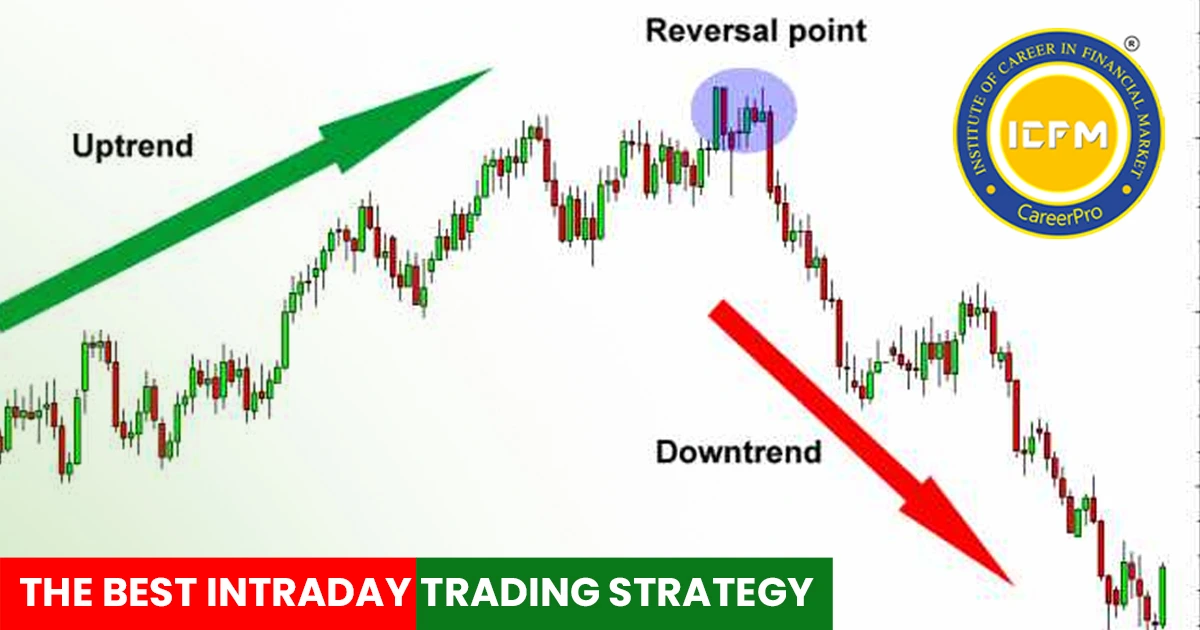The intraday trade, often called day trading, is when stocks or other financial instruments are bought and sold within a trading day. Precision and quick decisions in combination with the strategy are some of the critical components of the game. It would allow traders to reduce their risk as much as possible while maximising profits. Now, let's dig into one of the most effective intraday trading strategies and how you can execute it.
Understanding Intraday Trading
Intraday trading focuses on short-term market movements. The approach captures price volatility and helps achieve quick profits. Still, this trading style is quite risky, requiring control and a strong strategy.
The "Trend Reversal with Volume Confirmation" Strategy
The "Trend Reversal with Volume Confirmation" is one of the most reliable intraday trading strategies. This strategy uses price reversals supported by high trading volumes as a sign that market sentiment is about to change.
Components of the Strategy:
1. Identifying Trend Reversals:
Technical Indicators:
- Use MA, RSI, and MACD.
- Some of the signals that should be observed include:
- Crossover in MACD, indicating a change in momentum.
- RSI cuts below 30 or above 70 levels and then reverses its movement.
- Hammer, Doji, or Engulfing at key support or resistance zones.
2. Volume Analysis:
- Closely follow the trading volume. A trend reversal with an increase in volume confirms the strength of market participation.
- Apply volume indicators like On-Balance Volume (OBV) or Volume Weighted Average Price (VWAP).
3. Entry and Exit Points:
- Enter a trade once volume confirms a reversal signal.
- Set a stop-loss below the recent low (for long trades) or above the recent high (for short trades).
- Define a target profit based on the risk-reward ratio, ideally 1:2 or higher.
4. Risk Management:
- Risk no more than 1-2% of your total trading capital on any one trade.
- Lock in your profits with trailing stop-loss orders as the trade moves in your favour.
Step-by-Step Execution:
1. Pre-Market Preparation:
- Analyze market news, global trends, and key economic events.
- Identify 3-5 stocks which have high liquidity and volatility for a watchlist.
2. Market Open:
- Sit through the opening 15-30 minutes, and do not enter any trades at this time.
- Watch for signals of reversals
3. Set-up Confirmation
- This can be determined through technicals and volume.
- Ensure that a clear entry point, stop, and target have been established and trade accordingly.
4. Trade Management
- Watch the trade very closely. When it has moved a significant distance in your favor, take the stop-loss to the breakeven point.
- Exit partially at predefined levels to take profits.
5. After-Market Review:
- Review your trades to know what worked and what did not work.
- Refine your strategy from the learnings of the day.
6. Tools and Resources for Intraday Traders
- Trading Platforms: Choose a platform that has faster execution speeds and advanced charting tools.
- News Feeds: Get real-time market news and announcements.
- Learning Resources: Keep learning and enhancing your skills through courses, books, and webinars.
7. Common Mistakes to Avoid :
- Overtrading: Do not make unnecessary trades based on emotions.
- Stop-Loss Ignored: Always stick to your stop-loss to avoid significant losses.
- Lack of Discipline: Stick to your strategy and avoid impulsive decisions.
Final Thoughts
The "Trend Reversal with Volume Confirmation" strategy can be balanced by including technical analysis and market psychology. Remember, no strategy guarantees each trade's success. Consistency in practice, sound risk management, and emotional discipline are the keys to a successful intraday trader.









